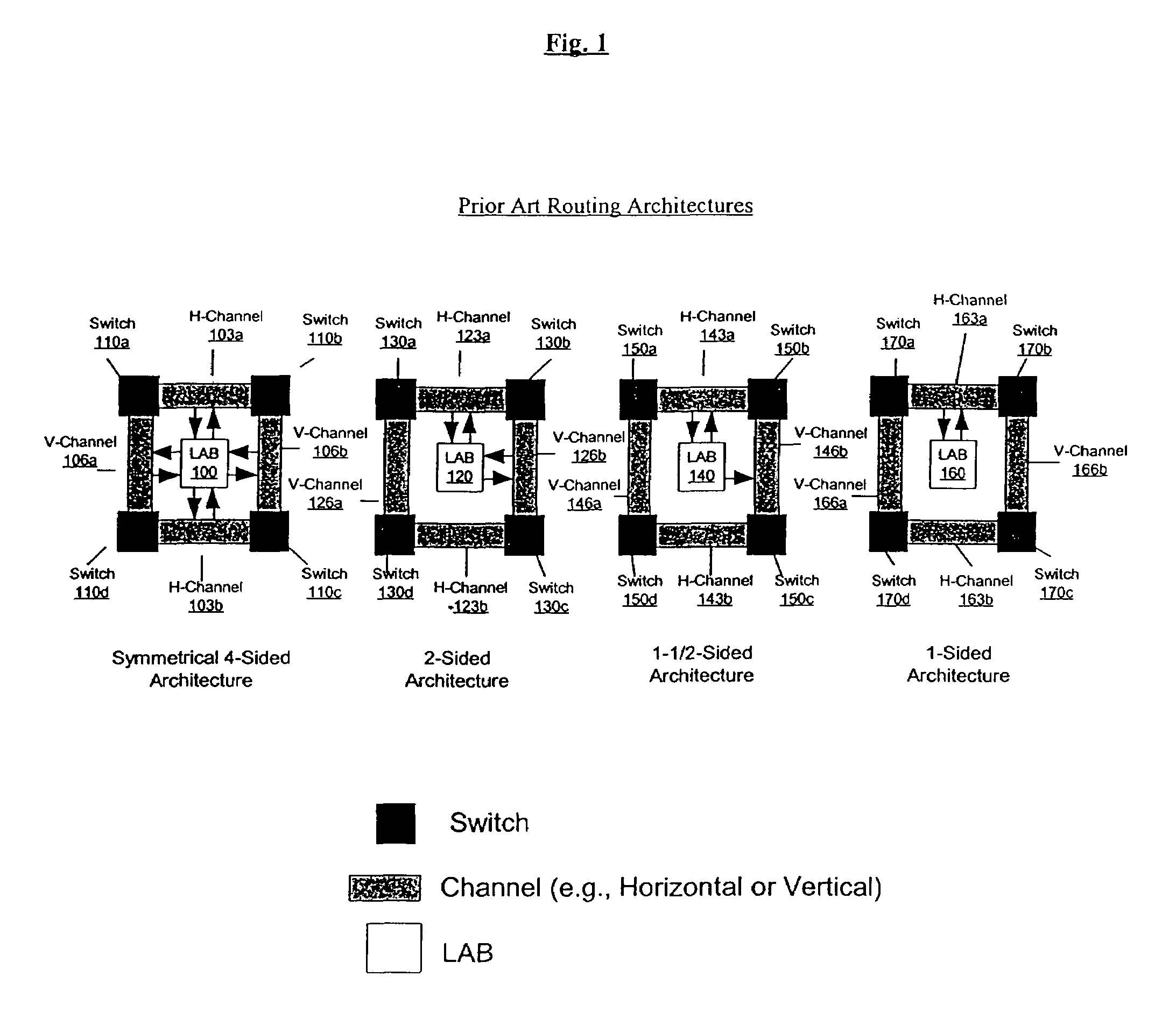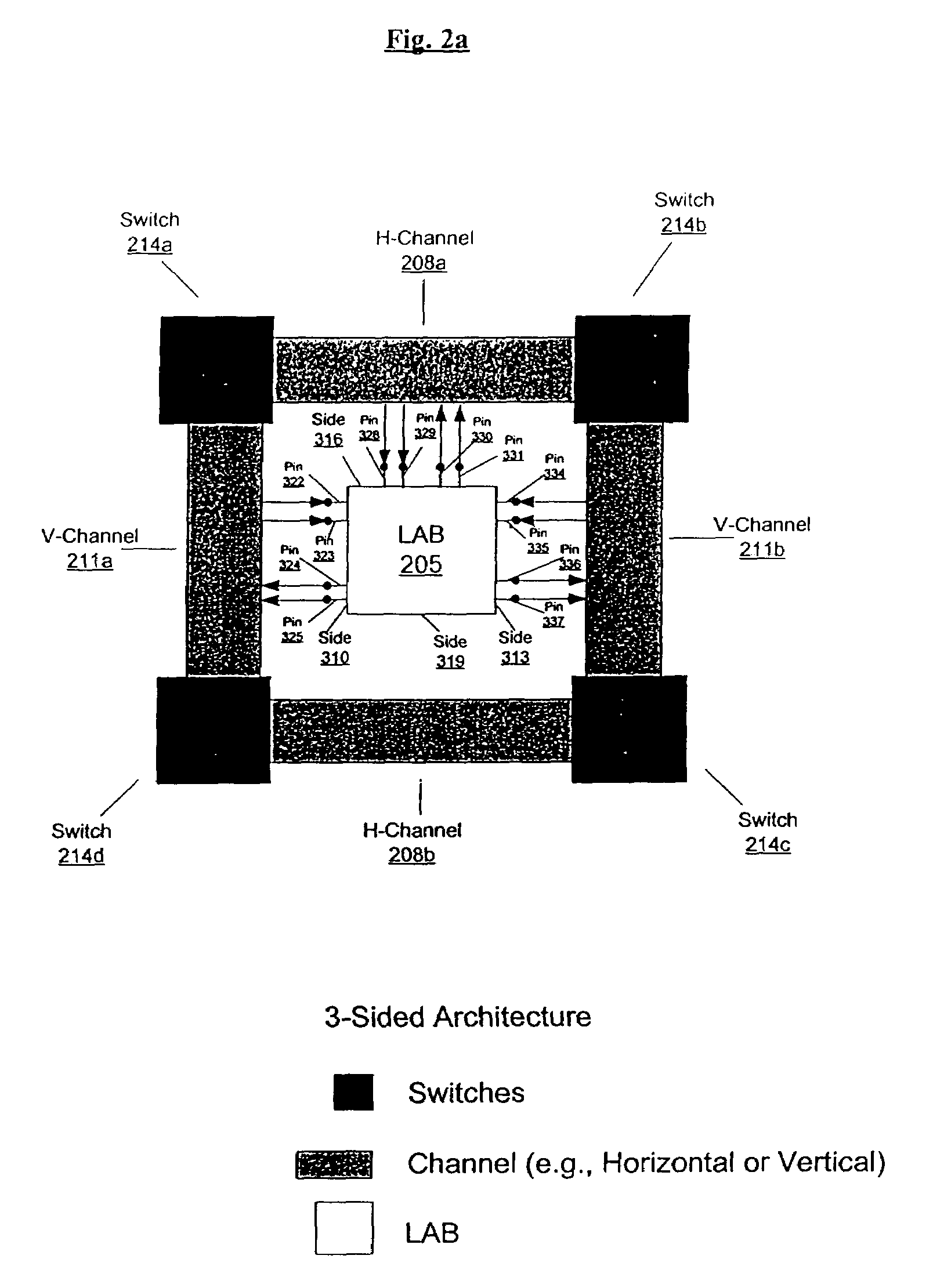Routing architecture for a programmable logic device
a programmable logic and routing architecture technology, applied in the field of integrated circuits, can solve the problems of slow circuit speed of pld, delay in the reach of transmitted signals, and inefficient routing resources on both horizontal and vertical channels,
- Summary
- Abstract
- Description
- Claims
- Application Information
AI Technical Summary
Problems solved by technology
Method used
Image
Examples
Embodiment Construction
[0026]The routing architecture for the PLD provides input and output connections between a function block (e.g., the LAB, a memory block, an input / output block, an arithmetic logic unit, or a multiply-accumulate block) and horizontal and vertical channels. In one embodiment of the present invention, a function block is programmably coupled to two channels that are disposed on opposite sides of the function block (e.g., a first vertical channel disposed on the left or right side of the function block and a second vertical channel disposed on the opposite side of the function block) and another channel disposed on a third side of the function block (e.g., a horizontal channel disposed on the top side of the function block). The function block can transmit and receive signals from all three of these channels. This configuration is referred to herein as a 3-sided routing architecture.
[0027]In order to provide concrete examples, the remainder of this document refers to the 3-sided routin...
PUM
 Login to View More
Login to View More Abstract
Description
Claims
Application Information
 Login to View More
Login to View More - R&D
- Intellectual Property
- Life Sciences
- Materials
- Tech Scout
- Unparalleled Data Quality
- Higher Quality Content
- 60% Fewer Hallucinations
Browse by: Latest US Patents, China's latest patents, Technical Efficacy Thesaurus, Application Domain, Technology Topic, Popular Technical Reports.
© 2025 PatSnap. All rights reserved.Legal|Privacy policy|Modern Slavery Act Transparency Statement|Sitemap|About US| Contact US: help@patsnap.com



